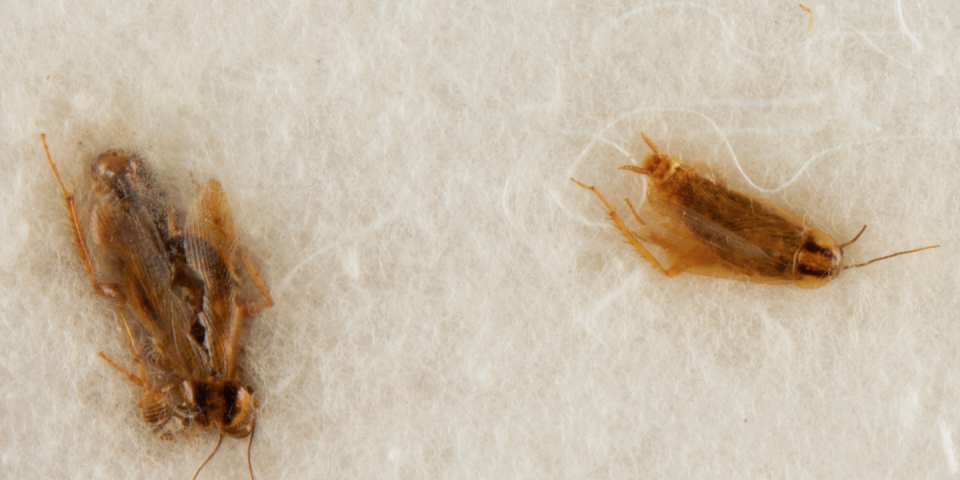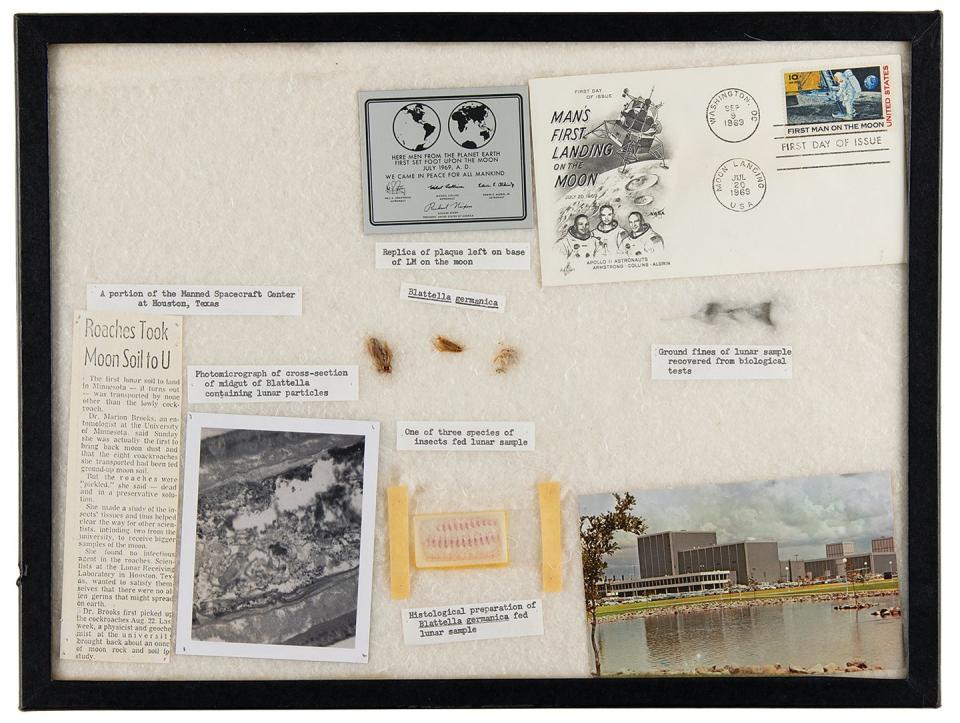Roaches That Chomped on Apollo 11 Moon Dust Are Up for Auction

An Apollo 11 experiment included feeding cockroaches lunar soil. Now, pieces of that research are up for auction.
Moon dust, extracted from the stomachs of cockroaches, could sell for as much as $400,000.
The auction lot includes glass slides and dead insects, all from the 1969 moon mission.
Lunar dust is hard—and expensive—to come by. So difficult, in fact, that an auction house is offering up lunar dust extracted from the stomachs of dead cockroaches. Yep, now you can get your moon dust straight from the digestive tract of insects. That is, if you’ve got hundreds of thousands of dollars lying around.
During the Apollo 11 mission, astronauts brought back 47.5 pounds of moon rock, divvied up among the scientific community for testing. Over four pounds of that rock went toward studying invertebrate life, exposing insects to the lunar particles by mixing it with their food. Now, only minuscule amounts of that rock remain, including just a touch from a special cockroach experiment.
🌓 Don’t miss any of our out-of-this-world stories. Join Pop Mech Pro today.
Offered up by Amherst, New Hampshire’s RR Auction, the lot includes not only vials of moon dust weighing about .0014 ounces, but also three preserved Blatella germanica cockroaches and glass slides used in experiments relating to the moon mission.
As of June 1, the bid for the lot has topped $12,000. Although, considering Apollo 11 moon dust sold for $500,000 back in April, RR Auction hopes to see this specimen rise to about a $400,000 bid. The auction will remain open until June 23.
Upon returning to Earth, the insects digested lunar particles at the Lunar Receiving Laboratory at NASA’s Johnson Space Center in Houston by creating a 50-50 mixture of the dust and their food. Marion Brooks—an entomologist from the University of St. Paul, who contracted with NASA to run the experiment—then dissected the cockroaches to examine them post-moon-dust ingestion. The lunar particles caused no damage to the insects, and Brooks published her findings in July 1970.

Before leaving the university, Collectspace reports that Brooks created her own special remembrance for her role in the Lunar Receiving Laboratory project; She crafted a display with the “ground fines of lunar sample recovered from biological tests” and three preserved cockroaches. She then hung it on her wall for decades. Pair that display with glass slides and the latest Apollo 11 find certainly has a unique twist.
It isn’t everyday that moon dust comes on the market, especially samples taken directly from the stomachs of cockroaches, which the auction house describes as material that has been “transformed from moon dust to cockroach chyme—a one-of-a-kind rarity in the space marketplace.”
You Might Also Like
